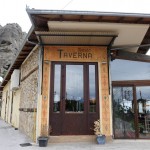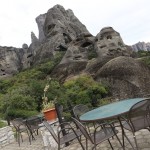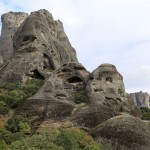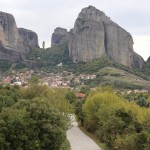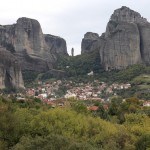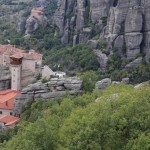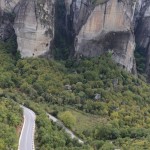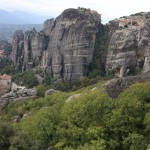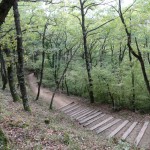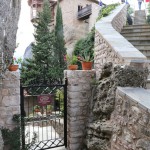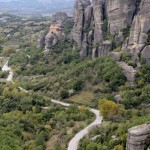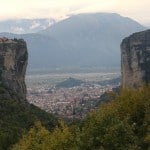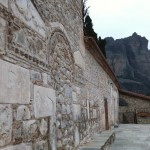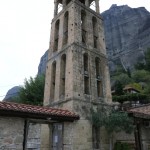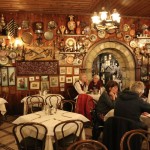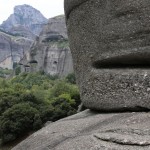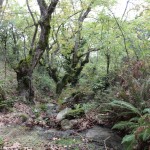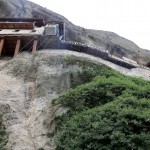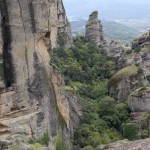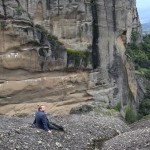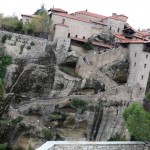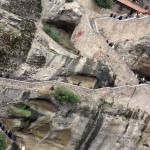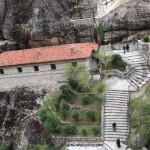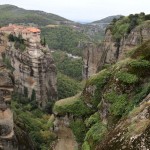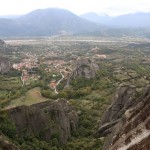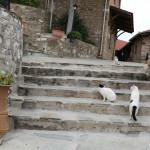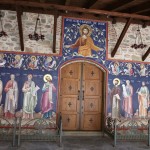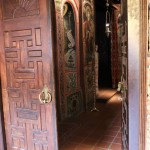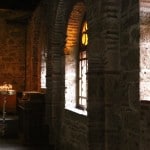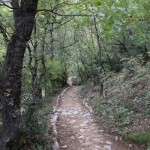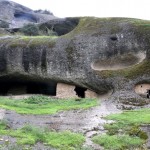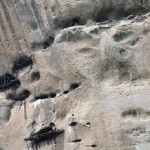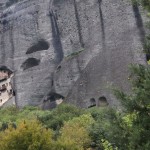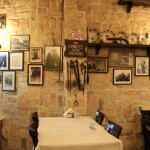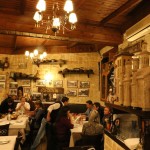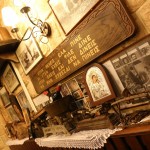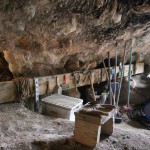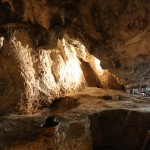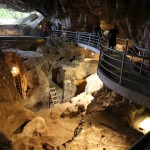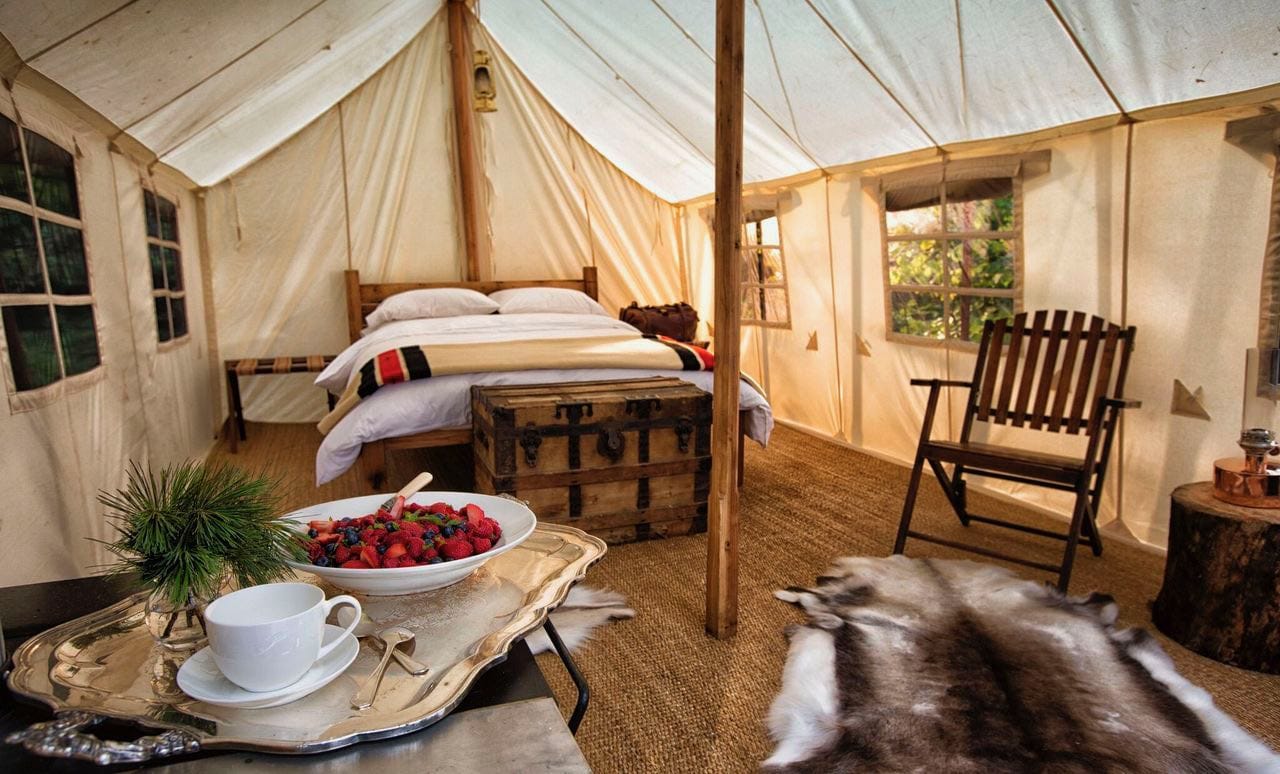When one encourages a Greek holiday to a perspective traveller their eyes tend to light up and conversation fills with romantic notions of hiking up the Acropolis in Athens and island hopping through turquoise waters via paradise found in Mykonos and Santorini. On my recent trip to Greece I learned first hand that the land of feta and kalamata offers adventurers far more than its ancient capital and sunset swept Cyclades.
We soared outside of the city’s suburbs and soon found ourselves winding through the rural roads of northern Greece which were dotted with fluffy cotton fields, moody hills and lakes which offered a reflection of puffy autumnal cumulous.
The monasteries of Meteora are indisputably one of the great sights of Greece. These extraordinary buildings, perched on seemingly inaccessible rock pinnacles, occupy a valley just north of Kalambaka. Meteora literally translates to “suspended in mid-air,” and it isn’t until one finds themselves hiking through this UNESCO world heritage sanctuary that you can begin to realize what “take your breath away” truly means.
Kalambaka is the perfect home base for outdoor adventure seekers and history buffs looking to explore the mighty monasteries of Meteora. The small town is dotted with intimate guest houses and family owned inn’s as well as a handful of restaurants which serve epic feasts that focus on locally raised meat and seasonal produce.
I sipped and nibbled my way through Meteora in October and was delighted to indulge in the regions autumnal bounty: braised leeks, sweet beets, roasted feta, zucchini fritters, spicy sausage, plump meatballs, sesame and pomegranate adorned salads, creamy moussaka and pork stuffed cabbage rolls.
Your best bets for a bite: Meteoron Panorama (pretty views and fantastic patio), Restaurant Meteora (campy interior with walls covered in antiques and old beer bottles) and Restaurant Panellinio (featuring an intimate dining room where you’ll find the regions best home cooking).
Today tourists flock to Meteora to enjoy jaw dropping views, whisk their way through eerily ancient cliffside cathedrals, huff and puff along heroic hiking trails and tap into the regions unique hermit history.
Emerging about 25 million years ago as an elevated seabed, the outcome of strong tectonic movements, the Meteora rocks became a shelter for humankind. The first hermits arrived in this area to seek spiritual isolation and inhabited the caves of the rocks, with the sole aid of ropes and ladders. Common existential needs and strong religious faith compelled them to live united in the first monastic communities, their common drive of faith guiding them towards the construction of the regions now world famous monasteries.
Meteora’s 24 monasteries emerged on these rocky summits from the 14th until the 16th century, six of them remaining to be explored and admired today. These monasteries became the centre of the Orthodox creed in the Byzantine era, having produced some of the best pieces of religious art and craft and still possessing a collection of precious manuscripts, which today are on display in their museums.
The two best ways to explore Meteora’s monasteries are by car (the most visited offer parking) and on a guided hike (that off the beaten track experience you’re craving).
Hop behind the wheel and visit The Great Meteoron Monastery which is the highest, largest and oldest in Meteora – requiring a climb of nearly 300 steps from its entrance. If you are pressed for time and only have the opportunity to visit one monastery this should be it! Continue on to Varlaam Monastery, located opposite the Great Meteoro and founded in the mid 14th century by the exercitant Hosios Varlaam. The present building, now home to a handful of monks is one of the most beautiful in the valley. The petite bridge you have to tip toe over is something out of a fairy tale!
Strap on your hiking boots to explore Ypapanti Monastery which was constructed inside a large cavity of rock (you’ll be gobsmacked)! Be sure to continue along the path and hike up the hill directly across from the monastery to enjoy the most rewarding views. Holy Trinity Monastery is the most difficult to access, but once you hike to the very top the panoramic view will have you wide eyed and breathless. The monasteries main cathedral was constructed in the 15th century and decorated with frescoes in 1741 by two monks. Film buffs might recall that Holy Trinity was made famous in 1981, featured in the James Bond film, For Your Eyes Only.
History buff’s can go further afield once ecstatic from the ecclesiastical. Theopetra’s Prehistoric Cave is a quick drive outside of town (4km) and home to the oldest known man-made structure on earth. The cave is unique from an archaeological perspective because it contains, within a single site, the records of two cultural transitions: the replacement of Neanderthals by modern humans, and the later transition from hunter-gathering to farming after the end of the last Ice Age. The cave is also home to the world’s oldest human footprint which dates back 120,000 years and the grave of a young woman who died 10,000 years ago.

